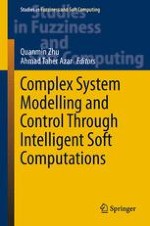2015 | OriginalPaper | Chapter
Swarm Intelligence Techniques and Their Adaptive Nature with Applications
Authors : Anupam Biswas, Bhaskar Biswas
Published in: Complex System Modelling and Control Through Intelligent Soft Computations
Publisher: Springer International Publishing
Activate our intelligent search to find suitable subject content or patents.
Select sections of text to find matching patents with Artificial Intelligence. powered by
Select sections of text to find additional relevant content using AI-assisted search. powered by
